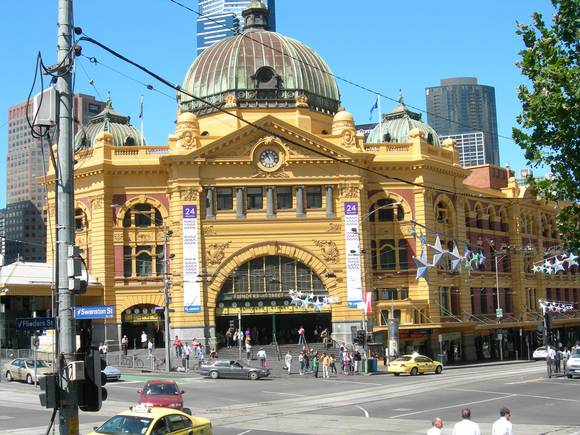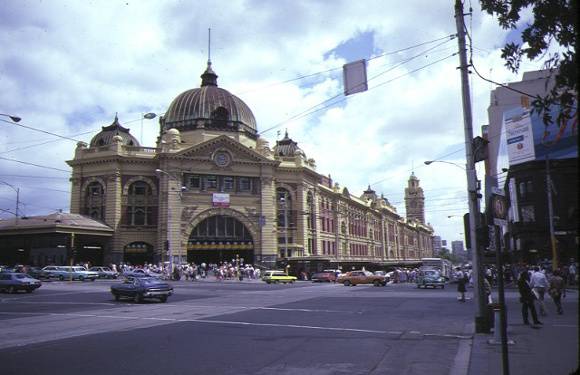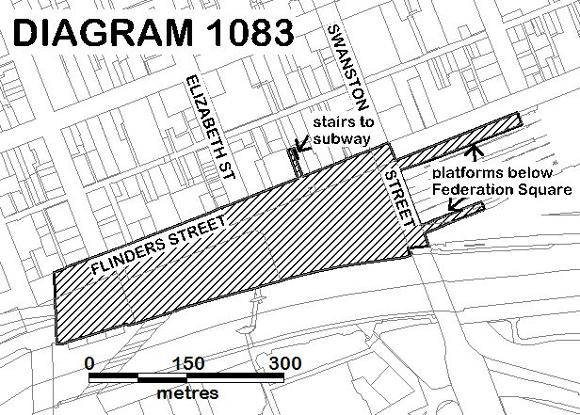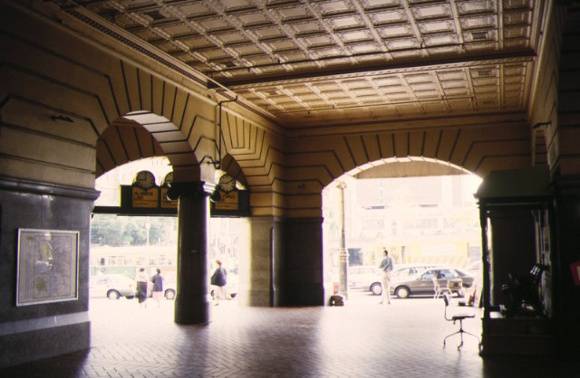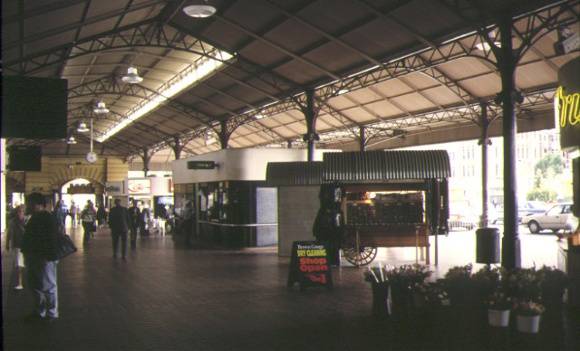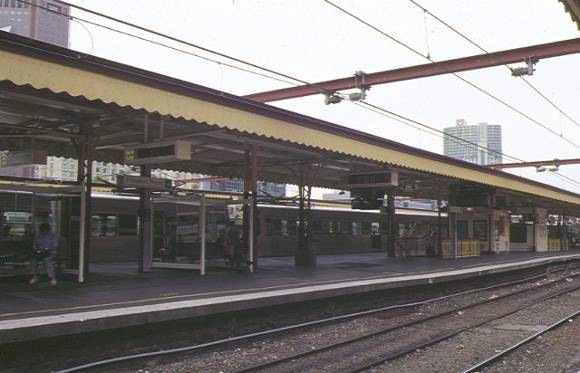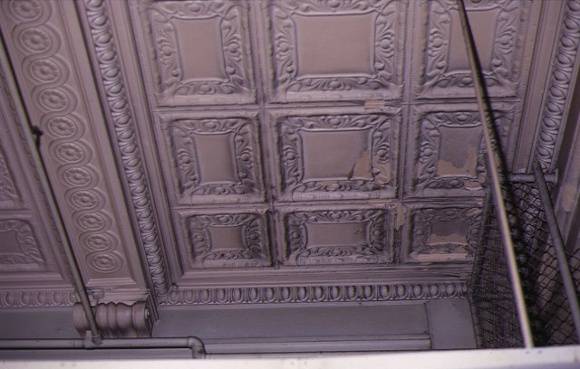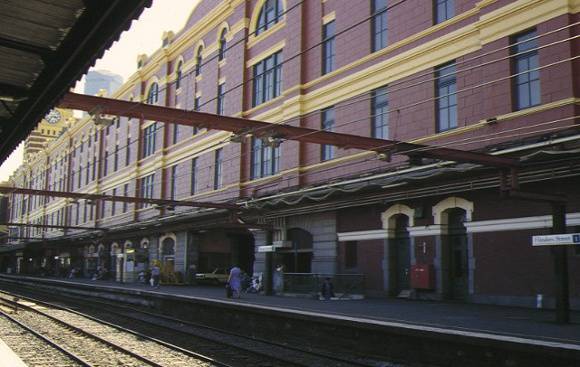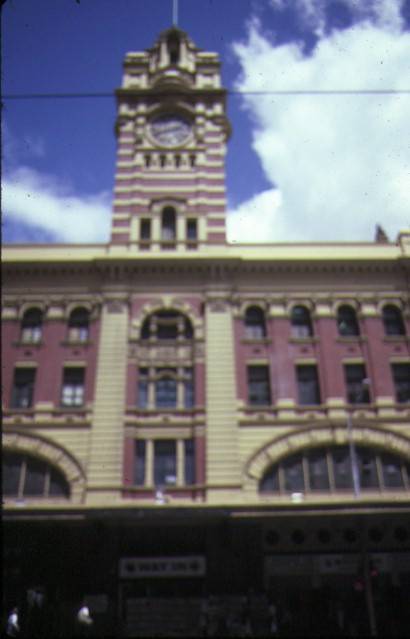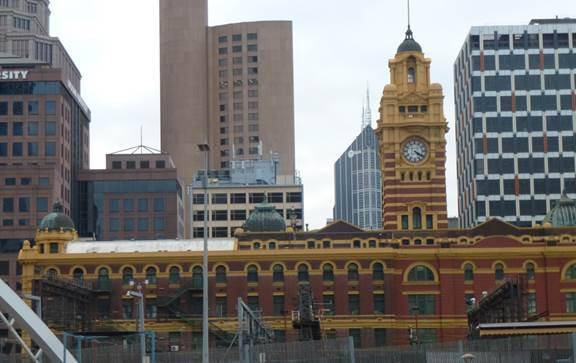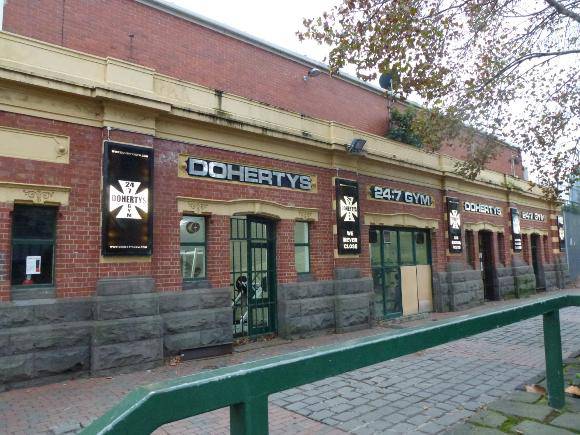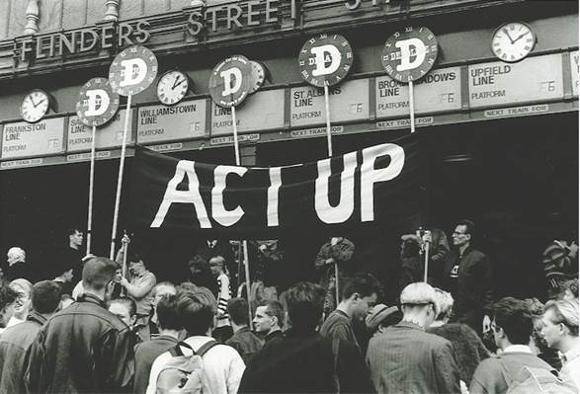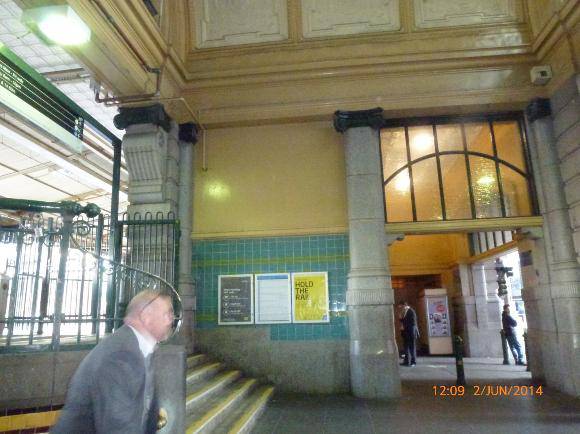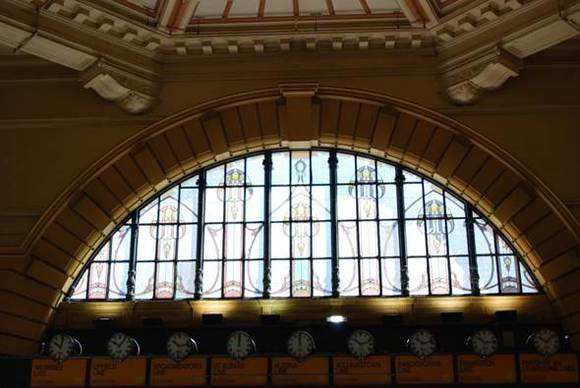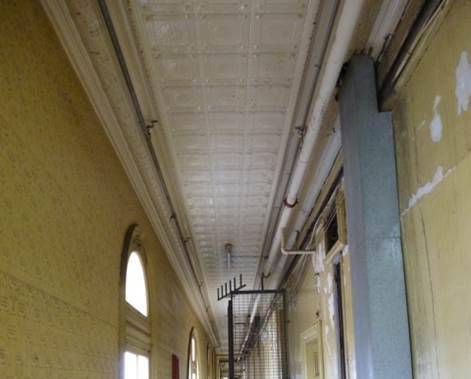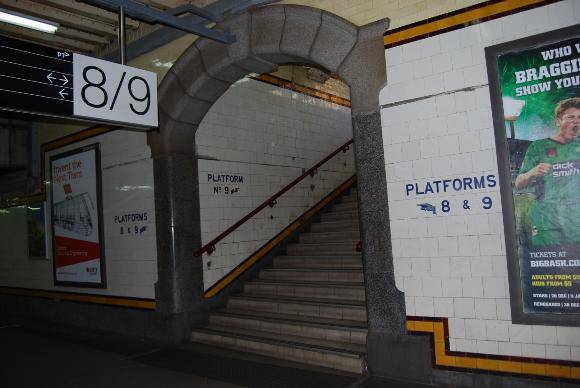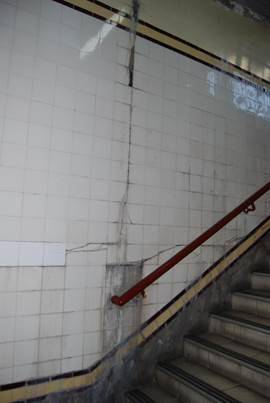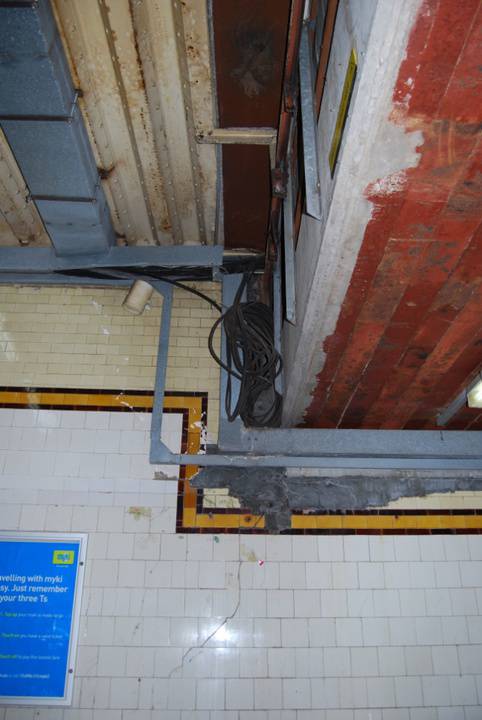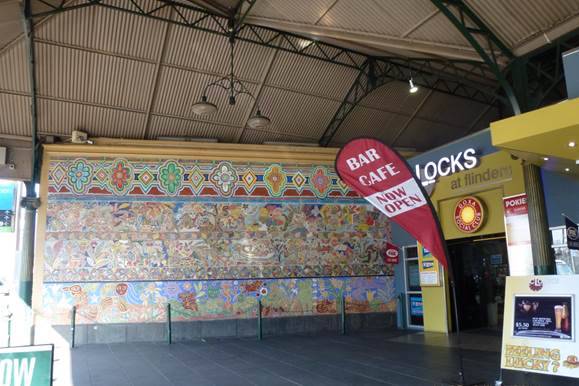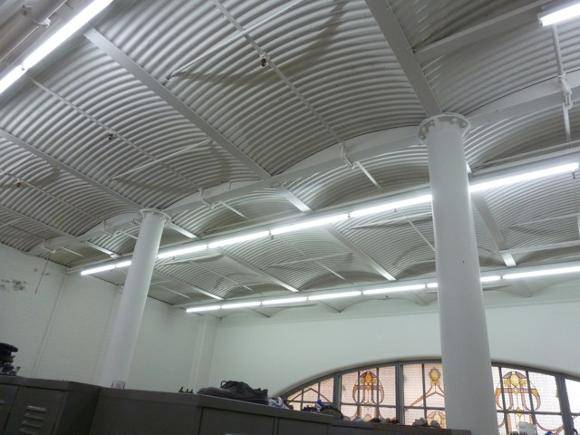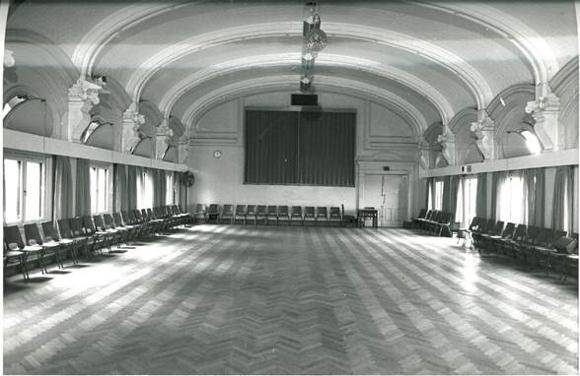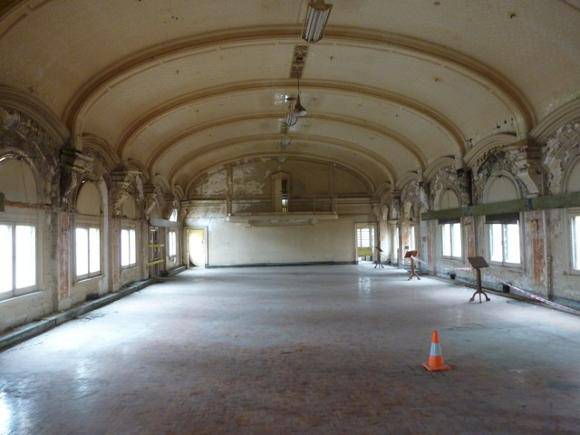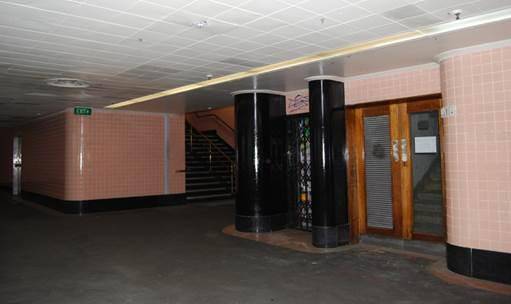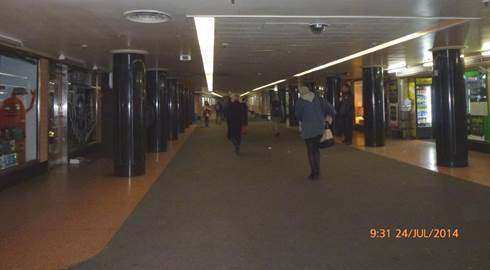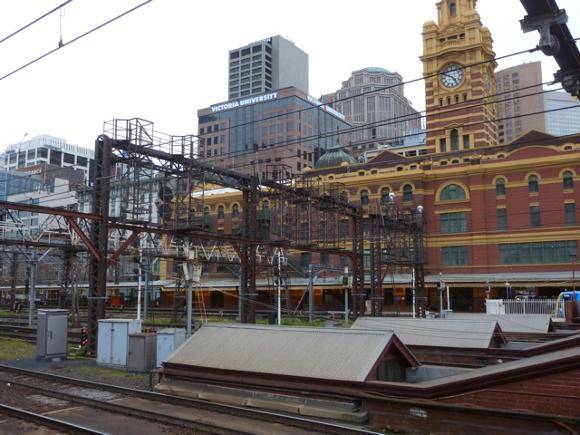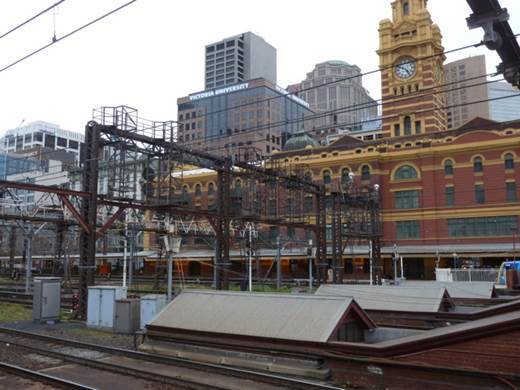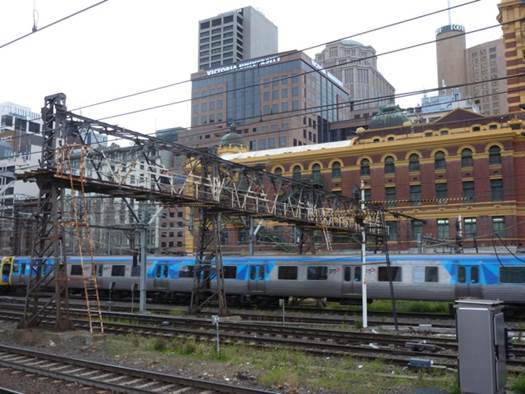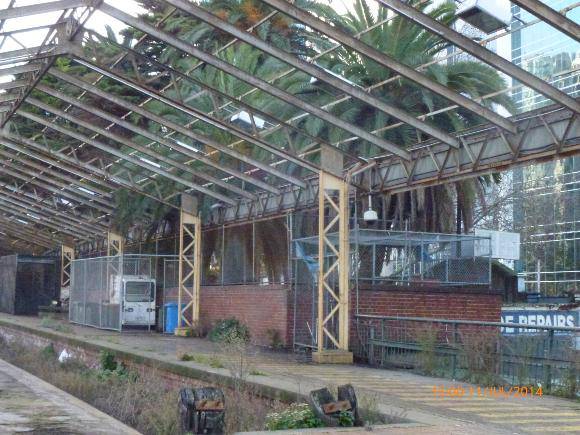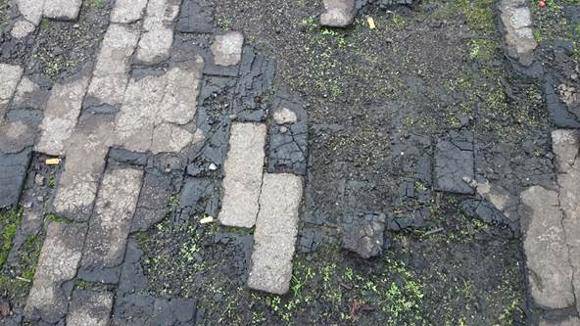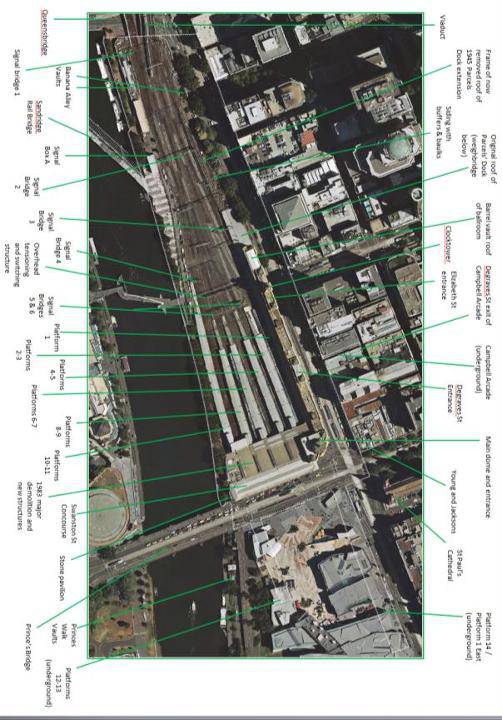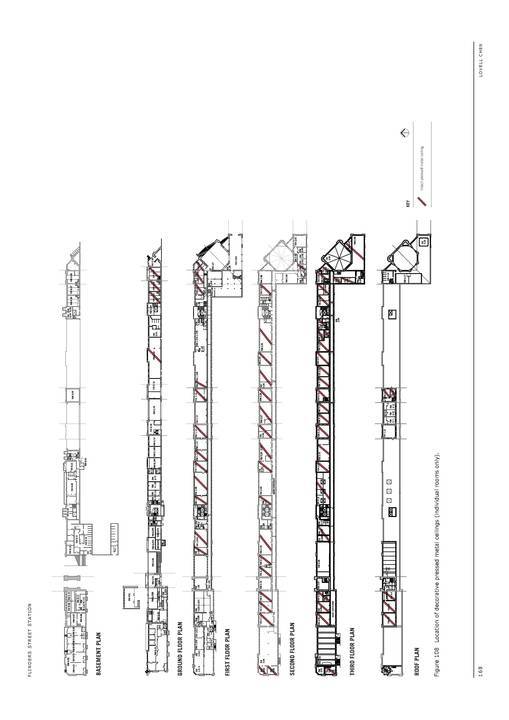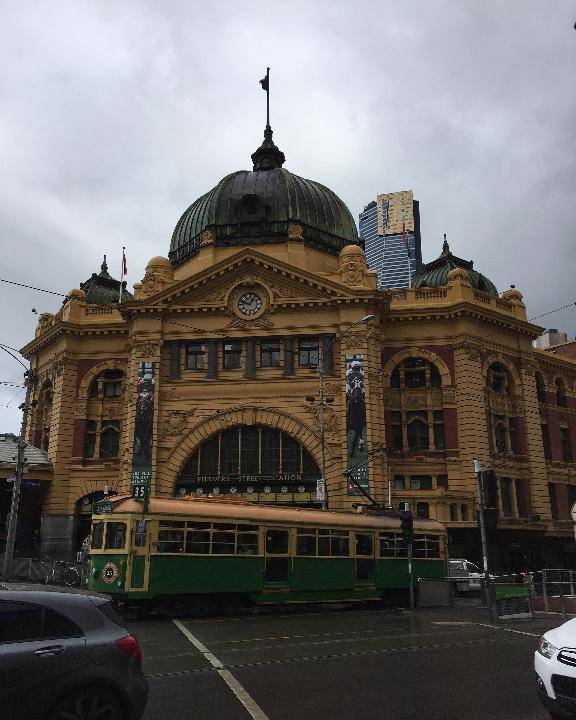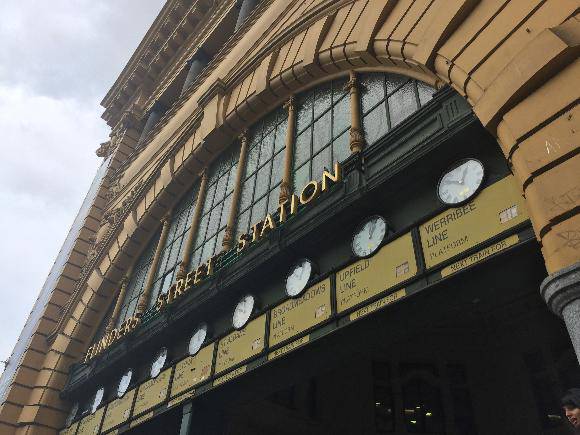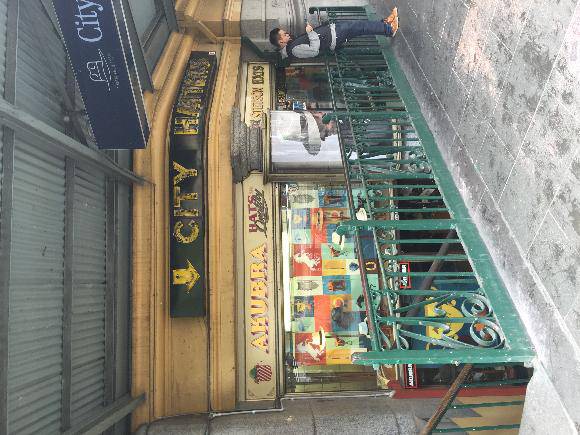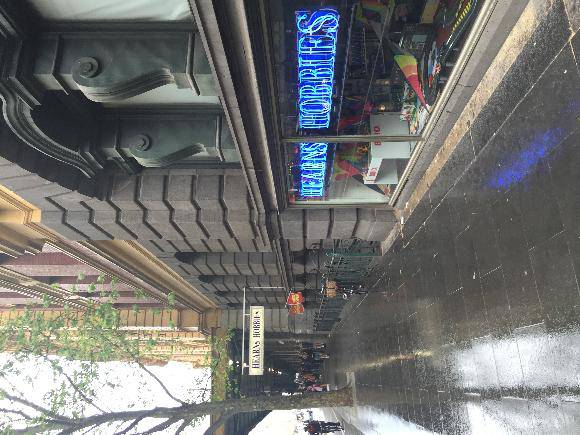| Back to search results » | Back to search page » |
|
FLINDERS STREET RAILWAY STATION COMPLEX
Statement of Significance
What is significant? History Summary The Flinders Street Railway Station Complex occupies a site that has been one of the central points of Melbourne's rail system since the 1850s. The first train line at Flinders Street was constructed in 1854 and further lines and platforms were installed and rearranged both before and after construction of the main station building. It was the town terminus for the Melbourne & Hobson's Bay Railway Co, which in 1854 was the first steam locomotive hauled passenger railway operation in Australia. Later, private company operations from adjacent Princes Bridge Station were linked up under Swanston Street to Flinders Street Station by the expanded Melbourne & Hobson's Bay United Railway Co. in 1865. This company and its assets were taken over by the Victorian Railways in 1878 In 1891 the Victorian Railways connected Flinders Street to its existing major station at Spencer Street with a viaduct . By the 1880s the original buildings at Flinders Street were considered inadequate and a competition was held for redesign of the station. The competition was won by James Fawcett and HPC Ashworth of the Railways Department. Demolition of the original station and other buildings on the site commenced in 1900. The foundations were begun in 1902 and Peter Rodger commenced construction in 1905. He was dismissed in 1908 and the work was taken over by the Railways Department using day labour. The station was completed in 1910. The imposing design of the Edwardian baroque style station building reflects the importance of the new Station to the city. The three-storey station building designed originally was intended to accommodate passenger, administration and staff facilities. Changes made during construction added a basement and a third floor containing facilities for the Victorian Railway Institute. The Elizabeth Street and the Central/Degraves Street subways ran under the Station with stairs from the platforms to the Central/Degraves Subway and ramps from the platforms to the Elizabeth St Subway. The subways were constructed at the same time as the Station to protect passengers changing platforms from the smoke and steam of steam trains, while Campbell Arcade (between the Central / Degraves Street subway and Degraves Street) opened in 1955. The Parcels Yard and Dock (formerly known as the Milk Dock), was established as the Station's main loading point and road connection. At the eastern end there is an entrance ramp from Flinders Street, and loading bay adjacent to the west facade of the main Station building (the original parcels yard) and, further west, a siding (dock platform), located to the rear (north) of platform 1 and adjacent to the vaults. The Banana Alley Vaults are located underneath the railway viaduct linking Flinders Street Railway Station to Spencer Street Railway Station. The viaduct between Flinders Street Railway Station and Spencer Street Railway Station was constructed in two stages between 1888 and 1915. The Banana Alley Vaults underneath the viaduct were constructed by the Railways Department in 1892 as commercial properties benefiting from their close proximity to the two railway stations and Queens Wharf, which remained in operation until 1927. The vaults also provided the Department with potential rental income from an otherwise unusable space beneath the viaduct. Despite community opposition, extensive changes were made to the Booking Hall and Swanston Street concourse area from 1983 to 1999. The major change was the staged removal of all the ramps to the platforms from the Swanston Street concourse, including the stone entrances to these ramps as well as the installation of escalators and lifts to the platforms and the creation of Clocks Bistro. A major refurbishment of the centre of the concourse included demolition of original toilets and newspaper stalls to create a large open space and new toilets and shops. All the pale blue and green ceramic tiles lining the main booking hall were replaced with pink granite tiles and the bluestone and asphalt platforms and surviving Elizabeth St ramps were resurfaced with cement and white tiles. The Flinders Street Station Mural mosaic mural by Mirka Mora was commissioned by the Department of Transport and created in 1986, replacing the Riverside booking office. This site is part of the traditional land of the Kulin Nation. How is it significant? The Flinders Street Railway Station Complex is of historical, aesthetic, architectural, technical and social significance to the State of Victoria. It satisfies the following criterion for inclusion in the Victorian Heritage Register: Criterion A Importance to the course, or pattern, of Victoria's cultural history Criterion E Importance in exhibiting particular aesthetic characteristics Criterion F Importance in demonstrating a high degree of creative or technical achievement at a particular period. Criterion G Strong or special association with a particular community or cultural group for social, cultural or spiritual reasons. This includes the significance of a place to Indigenous peoples as part of their continuing and developing cultural traditions Why is it significant? The Flinders Street Railway Station Complex is significant at the State level for the following reasons: The Flinders Street Railway Station Complex is historically significant as the centre of the suburban railway system and is a major landmark building of the city and State. When completed, its imposing scale symbolised the importance of the railways to Melbourne and the primacy of Melbourne. Campbell Arcade was the first major public infrastructure to be built in the city following WWII, generating considerable public interest. [Criterion A] The main station building at the Flinders Street Railway Station Complex is architecturally and aesthetically significant as one of the most important public buildings in Victoria and as an excellent example of a great railway building of the early 20th century. Described by its architects as "French Renaissance in a free manner", the design of the Station encompasses a range of stylistic sources. In combining elements of French Renaissance sources, overlaid internally with Art Nouveau, it is a building with no direct comparison. Its eclectic design is unique and it represents an extraordinary example of a building type. The main station building's architectural significance is accentuated by its strategic location on the southern boundary of the city grid, where it is a gateway building dominating both the corner of Swanston and Flinders Streets and the view of the city from Southbank. [Criteria A and E] The layout of the platforms and subways is architecturally and historically significant because it has remained virtually intact since its construction in the first decade of the twentieth century, with the exception of the major refurbishment of the centre of the concourse and the replacement of the Swanston ramps with escalators and lifts. The open truss verandahs with circular steel brackets add a decorative element to each of the platforms and unify the design of the canopies over the external areas of the Station. The original cast and wrought iron balustrading surrounding the subway and shop entrance stairs also contributes to the overall level of ornamentation. Each of the platform entrances to the saw-tooth shelters over the Elizabeth Street Subway ramps feature decorative pressed metal sheeting to moulded entablatures. Campbell Arcade is a rare and substantial example of late Art Deco design in a distinctive 1950s colour scheme. The parcels siding and dock and associated infrastructure at the western end of platform 1 are also largely intact and demonstrate the original functions of this platform. The six early surviving signalling and electrification structures remain an integral part of the Station infrastructure. [Criteria A and E) The main station building at the Flinders Street Railway Station Complex is of aesthetic significance for the high standard of detailing using many of the architectural decoration techniques available in the early twentieth century, including pressed metal work (ferrous and non-ferrous), cast and wrought iron, copper domes, leadlight and stained glass and glazed Majolica and 1950s wall tiles. It has the most extensive use of Edwardian and 1950s wall tiles of any Station or building in the State. Campbell Arcade, designed in 1949, is of aesthetic significance as one of the most intact early post WWII public interiors in Melbourne with its salmon pink wall tiles, pink and black terrazzo floor, polished black granite columns and chromed steel shopfronts. The Flinders Street Station Mural, a mosaic mural by renowned Melbourne artist Mirka Mora is of aesthetic significance as an outstanding example of Mora's playful and sensuous iconography that is beloved by many Melbournians. The brick facade of the Banana Alley vaults dating to the construction of the railway viaduct in the early 1890s is of aesthetic significance for its balanced composition of exposed bluestone foundations, brick walls and rendered dressings. [Criterion E] The Flinders Street Railway Station Complex is of technical significance for its extensive use of four types of decorative and functional pressed metal work. It represents one of the largest and most extensive uses of pressed metal work in a public building in Victoria. This building offers a rare example of the use of this technique in large scale external wall cladding; structurally in the Träegerwellblech system of floor and ceiling construction; and in the copper for the roof domes, as well as extensive interior decorative use. The significance of this metalwork is enhanced by its high level of intactness. The early surviving signal bridges and the overhead tensioning and switching structures are also of technical significance. [Criterion F] The Flinders Street Railway Station Complex is socially significant as one of the best known and most heavily used public spaces in Melbourne. The station has a treasured place in the consciousness of many of the city's inhabitants, and the steps under the clocks at the entrance of the main station building have been a popular meeting place for generations of Melburnians. As Melbourne's central station, particularly before the City Loop was constructed, it was the primary entrance point to the CBD for city workers and shoppers alike for many decades. In addition, the main station building represents an extraordinary example of a public building offering a range of activities and functions to the general public and railway employees, aside from its primary function as a railway station. The facilities are unique for a public building of this period. The dining and refreshment room interiors on the first floor and the former Victorian Railways Institute rooms on the third floor are more akin to the gentlemen's club than to a railway station. Beyond a consideration of their relatively lavish interiors, these spaces have been extremely important in the twentieth century in providing large numbers of metropolitan railway employees with a social, sporting and organisational base. The cheap and easy availability of Victorian Railway Institute clubrooms for meetings and functions of a large and eclectic number of Melbourne clubs and societies broadens and emphasises the place's social significance. [Criterion G] The Flinders Street Railway Station Complex is also significant for the following reasons, but not at the State level: For its historical and ongoing role as the heart of the suburban railway system. For its association with Mirka Mora, the creator of The Flinders Street Station Mural. Mora has contributed artistically to the enlivening of the city of Melbourne. She is one of the artists who from the 1950s contributed to the transformation of Melbourne from quiet provincial town to a sophisticated multicultural city.
Group
Retail and Wholesale
Category
Shop


